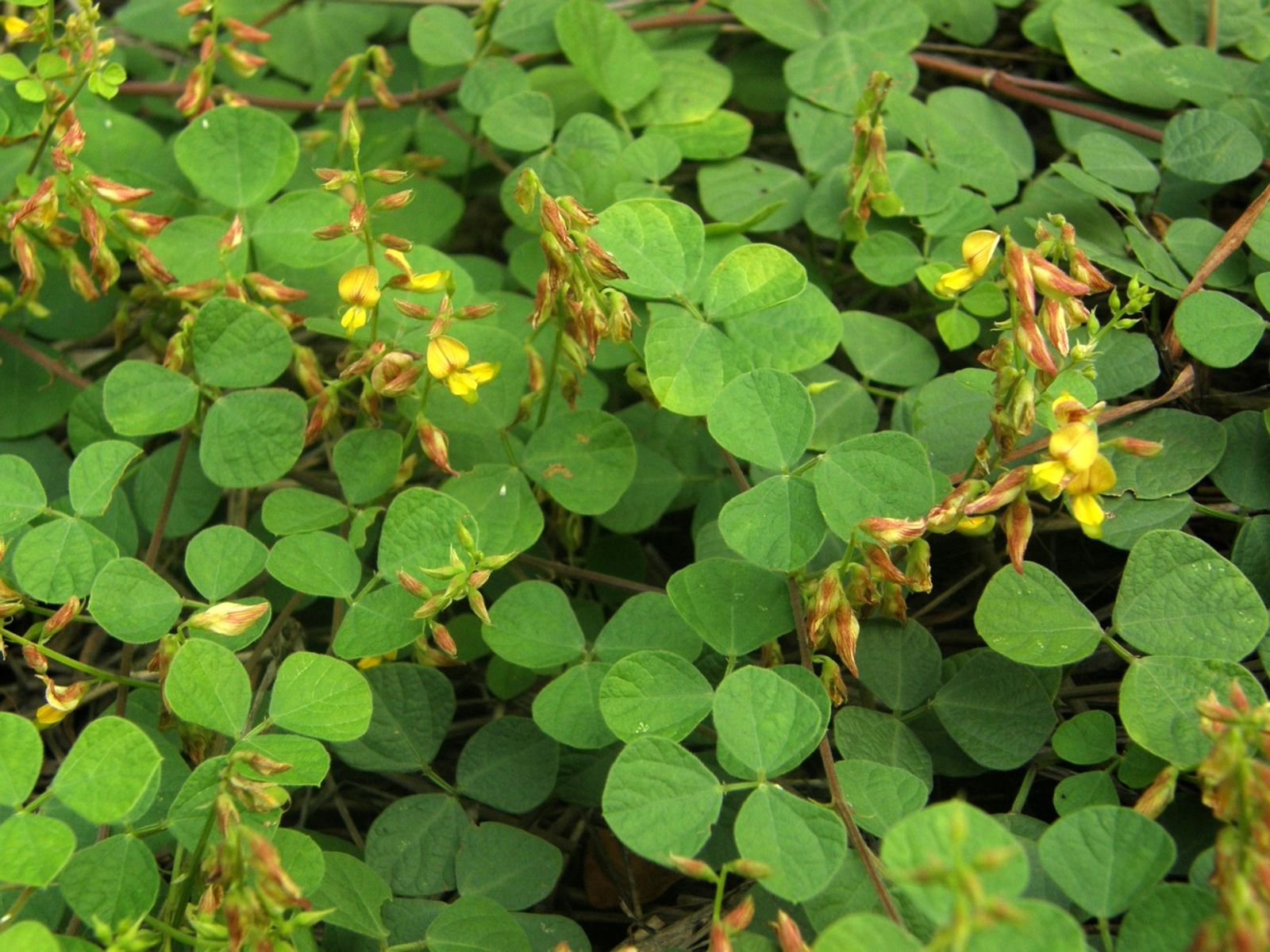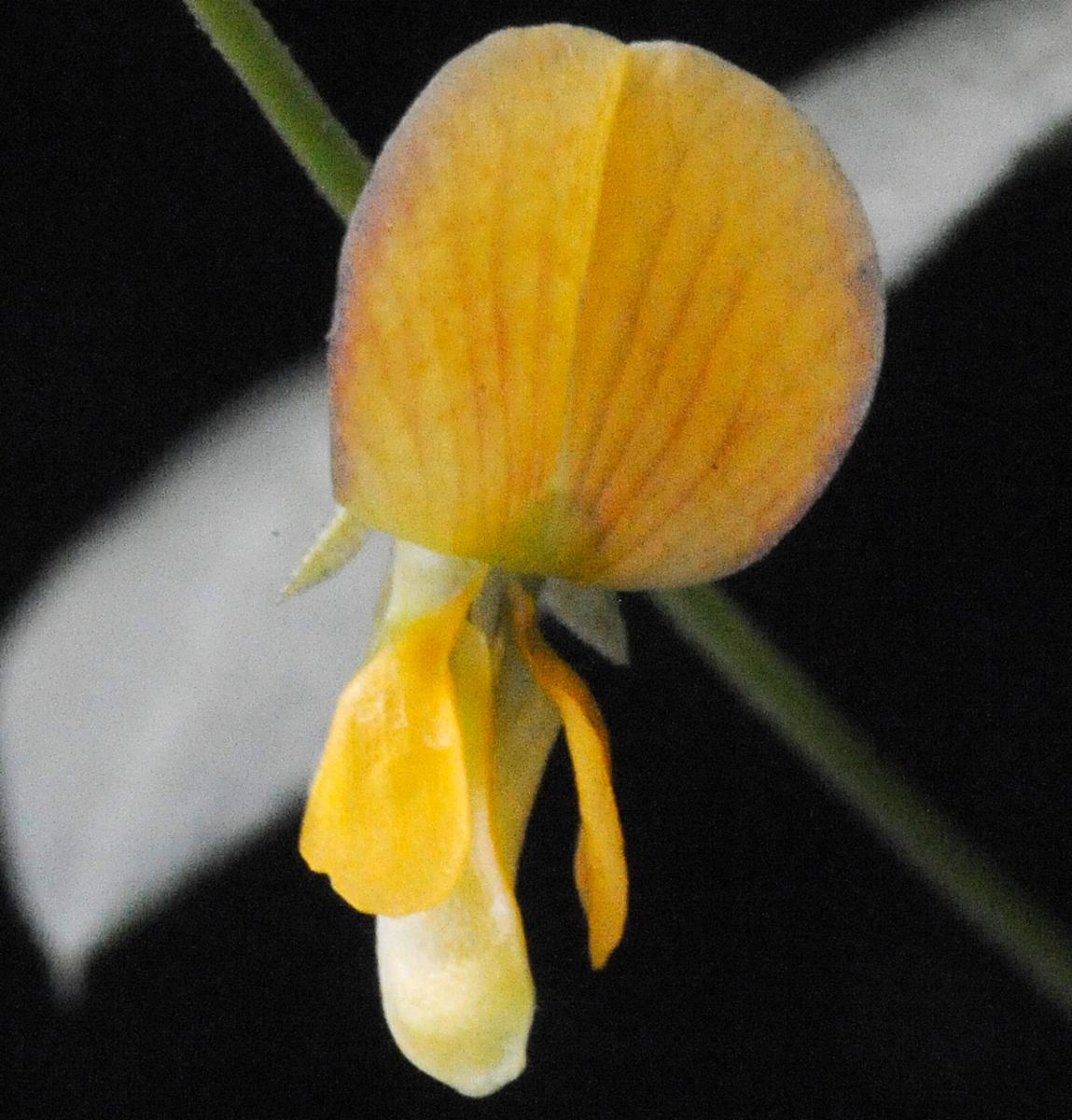Little Rhynchosia
rhynchosia minima
Also known as: ["Little Rhynchosia"]
Overview
A small, herbaceous plant in the legume family, often found in tropical and subtropical regions.
Benefits & Perks
["wildlife attractant (bees, butterflies, birds)","drought tolerant"]
Botanical Classification
| Phylum: | Magnoliophyta |
| Class: | Magnoliopsida |
| Order: | Fabales |
| Family: | Fabaceae |
| Genus: | Rhynchosia |
| Botanical Name: | Rhynchosia minima |
Plant Characteristics
Basic Information
- Category: Herbs & Weeds
- Suitable Location: outdoor garden in warm climates, or indoor pot with bright, indirect light
- Suitable For:
- Is Weed: No
- Allergenicity: low
Environmental Needs
- Climate: {"temperatureRange":"15–35°C"}
- Hardiness: {"zones":"9–11"}
- Misting: rarely required, only if ambient humidity is very low
- Drainage: Fast-draining to prevent waterlogging.
- Soil Type: Well-draining, loamy soil with added organic matter.
Maintenance Level
- Maintenance Level: moderate
- Toughness Level: moderate
- Pruning Frequency: Light pruning every 2–3 months; major pruning in early spring.
- Pruning Intensity: Moderate; remove up to one-third of growth if needed for rejuvenation.
Care Details
Ideal Sunlight Coverage:
Bright indirect light for 6–8 hours daily; tolerates partial shade, especially in hot climates.
Sunlight Tolerance Tips:
Acclimate gradually to intense light; protect from direct midday sun to prevent scorching; adjust placement based on seasonal light changes.
Care Requirements
Care Difficulty
moderatemoderate
Sunlight
full sun to partial shade
Rotate plant weekly for even growth; use sheer curtains to filter intense light; move outdoors in spring/summer for stronger light.
Watering
every 7–10 days during active growth, reduce in winter
Water thoroughly but infrequently; ensure soil dries between waterings; avoid overwatering.
Soil
well-draining, sandy loam with moderate organic content
pH: Slightly acidic to neutral (pH 6.0–7.0).
Use a mix of potting soil and perlite; avoid heavy clay soils; ensure pots have drainage holes.
Temperature
Prefers warm temperatures (65–85°F); tolerates mild fluctuations but avoids frost.
Avoid sudden temperature changes; protect from frost; maintain consistent warmth for optimal growth.
Fertilizing
every 4–6 weeks during growing season
Apply fertilizer after watering to prevent root burn; flush soil occasionally to prevent salt buildup; reduce feeding in dormancy.
Propagation
Methods
Stem cuttings or seed; stem cuttings are more reliable for home growers.
Step-by-Step Propagation Guide
- Take a 4–6 inch cutting.
- Remove lower leaves.
- Dip in rooting hormone.
- Plant in medium.
- Maintain humidity.
Best Time: Spring or early summer when the plant is actively growing.
Environment
High humidity (70–90%), warm temperatures (70–75°F), and indirect light.
Medium
Well-draining mix of perlite and peat moss or cactus soil.
Hormone
Recommended to use rooting hormone for faster root development.
Timeline
Roots develop in 2–4 weeks; new growth appears in 6–8 weeks.
Tools Needed
Pruning shears, rooting hormone, small pots, plastic wrap or propagator.
Quick Tips
Use healthy, non-flowering stems; keep medium consistently moist; provide bottom heat for faster rooting.
Pruning & Repotting
Pruning Guide
Method
Pinch back tips for bushiness; cut just above a leaf node or bud.
Pruning Plan
Prune to maintain shape, encourage bushier growth, and remove dead or diseased parts.
Tools
Clean, sharp pruning shears or scissors.
Checklist
Sanitize tools; prune dead/damaged growth; shape as desired; dispose of clippings.
Repotting Guide
Best Season
Early spring before the active growing season begins.
Pot Size
Increase pot size by 1–2 inches in diameter; ensure good drainage.
Method
Remove plant gently; trim roots if necessary; place in new pot with fresh soil; water lightly.
Suggestions
Repot every 2–3 years or when roots fill the pot; beneficial for growth and soil freshness.
Checklist
Check root bound status; prepare new pot with drainage; use fresh soil mix; water after repotting.
Advanced Care Tips
Watering Mastery
Watering Checklist
Check soil moisture; water deeply; ensure drainage; avoid wetting leaves.
How to Apply Water Properly
Water at the base of the plant, ensuring moisture reaches the root zone; allow excess water to drain away; water early in the day to minimize evaporation.
Watering Schedule Tips
Water deeply once the top inch of soil is dry; reduce frequency in winter to prevent root rot.
Soil Improvement
Add perlite or sand for drainage; incorporate compost for fertility; ensure aeration with coarse materials.
Temperature Stress Management
Signs of Temperature Issues
Wilting, yellowing leaves, or stunted growth in cold; leaf drop or scorching in excessive heat.
Cold Stress
Slows growth, causes leaf discoloration, and may lead to root damage in prolonged cold.
Solution: Move to a warmer location; insulate pots with bubble wrap; avoid cold drafts.
Hot Stress
Leaves may scorch, wilt, or drop; growth may slow due to excessive heat.
Solution: Provide shade during peak heat; increase humidity with misting; ensure adequate watering.
Fertilizing Guide
Fertilizing Checklist
Check growth phase; dilute fertilizer; apply to moist soil; avoid contact with leaves.
Fertilizing Method
Use balanced liquid fertilizer diluted to half strength every 4–6 weeks during growing season; avoid fertilizing in winter.
Common Problems & Solutions
Toxicity Warning
Cats
Slightly ToxicCats may experience mild gastrointestinal upset if they ingest Rhynchosia minima seeds or roots. The plant is not highly toxic but can cause discomfort and mild physiological effects in felines.
⚠️ Symptoms:
🌿 Toxic Parts:
⚡ Toxic If:
if eaten
Dogs
Slightly ToxicIn dogs, ingestion of Rhynchosia minima seeds and roots can lead to mild gastrointestinal upset. The plant is not highly toxic but can cause discomfort and mild physiological effects in canines.
⚠️ Symptoms:
🌿 Toxic Parts:
⚡ Toxic If:
if eaten
Humans
Slightly ToxicRhynchosia minima contains toxic compounds, primarily in its seeds and roots, which can cause mild to moderate gastrointestinal distress upon ingestion. The plant's toxicity is not severe but can lead to discomfort and mild physiological effects.
⚠️ Symptoms:
🌿 Toxic Parts:
⚡ Toxic If:
if eaten
Frequently Asked Questions
Q: Is Rhynchosia minima toxic to pets?
A: There is insufficient data on its toxicity to pets.
Q: How often should Rhynchosia minima be watered?
A: Water moderately, allowing the soil to dry slightly between waterings.
Q: Does Rhynchosia minima attract wildlife?
A: Yes, it attracts bees, butterflies, and birds.
Quick Reference
| Family: | Fabaceae |
| Care: | moderate |
| Light: | full sun to partial shade |
| Water: | every 7–10 days during activ |
Get Expert Care Tips
Download the Plantious app for personalized care reminders and plant identification!
Google Play App Store








